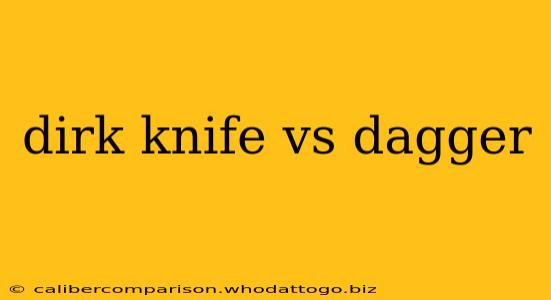The terms "dirk" and "dagger" are often used interchangeably, leading to confusion about their distinct characteristics. While both are stabbing weapons, understanding their historical context, design features, and intended uses reveals crucial differences. This in-depth comparison will clarify the nuances between a dirk knife and a dagger, helping you appreciate the unique attributes of each.
Defining the Dirk Knife
A dirk is typically a slender, single-edged or double-edged thrusting knife with a pointed blade. Historically, dirks were favored for their ability to inflict deep, penetrating wounds. The blade's length varied, but generally, it was longer and slimmer than most daggers. The handle, often made of materials like bone, wood, or horn, provided a secure grip during a stabbing motion. Dirks weren't solely weapons; they served as status symbols and were often ornate, reflecting the owner's wealth and position. Their association with Scottish and Irish cultures further adds to their unique identity.
Key Characteristics of a Dirk:
- Blade: Long, slender, and pointed, optimized for piercing. Often single-edged, but double-edged versions exist.
- Handle: Usually crafted from durable materials, often with elaborate designs.
- Purpose: Primarily a thrusting weapon, though it could be used for slashing in some instances.
- Historical Context: Strongly associated with Scottish and Irish cultures.
Understanding the Dagger
A dagger is a broader category encompassing various short-bladed stabbing weapons. Unlike the dirk's specific design, daggers exhibit greater diversity in blade shape, size, and handle design. They could be single-edged, double-edged, or even have multiple edges. Daggers' roles varied widely depending on their design and historical period; they served as both personal defense weapons and tools for hunting or combat.
Key Characteristics of a Dagger:
- Blade: Variable in shape, length, and edge type (single, double, or multiple edges). Could be designed for both thrusting and slashing.
- Handle: Design varies widely depending on the dagger's intended use and the period it was crafted.
- Purpose: Used for self-defense, hunting, combat, or even ceremonial purposes.
- Historical Context: Used across various cultures and time periods.
Dirk Knife vs. Dagger: A Comparative Table
| Feature | Dirk Knife | Dagger |
|---|---|---|
| Blade Shape | Typically long, slender, and pointed | Variable; can be broad, slender, curved, etc. |
| Blade Edge | Often single-edged, sometimes double-edged | Single, double, or multiple edges |
| Primary Use | Thrusting | Thrusting and/or slashing |
| Handle | Often elaborate, made of durable materials | Varies greatly depending on the dagger type |
| Historical Context | Strongly associated with Scottish and Irish cultures | Used across various cultures and time periods |
Conclusion: More Than Just Names
While both are stabbing weapons, the dirk and dagger represent distinct categories within the broader world of edged weapons. The dirk, with its specific design and cultural associations, stands apart from the more diverse family of daggers. Understanding these nuances allows for a richer appreciation of the historical and functional aspects of these fascinating blades. Further research into specific types of dirks and daggers from various historical periods will reveal even more fascinating details about their design, use, and cultural significance.

